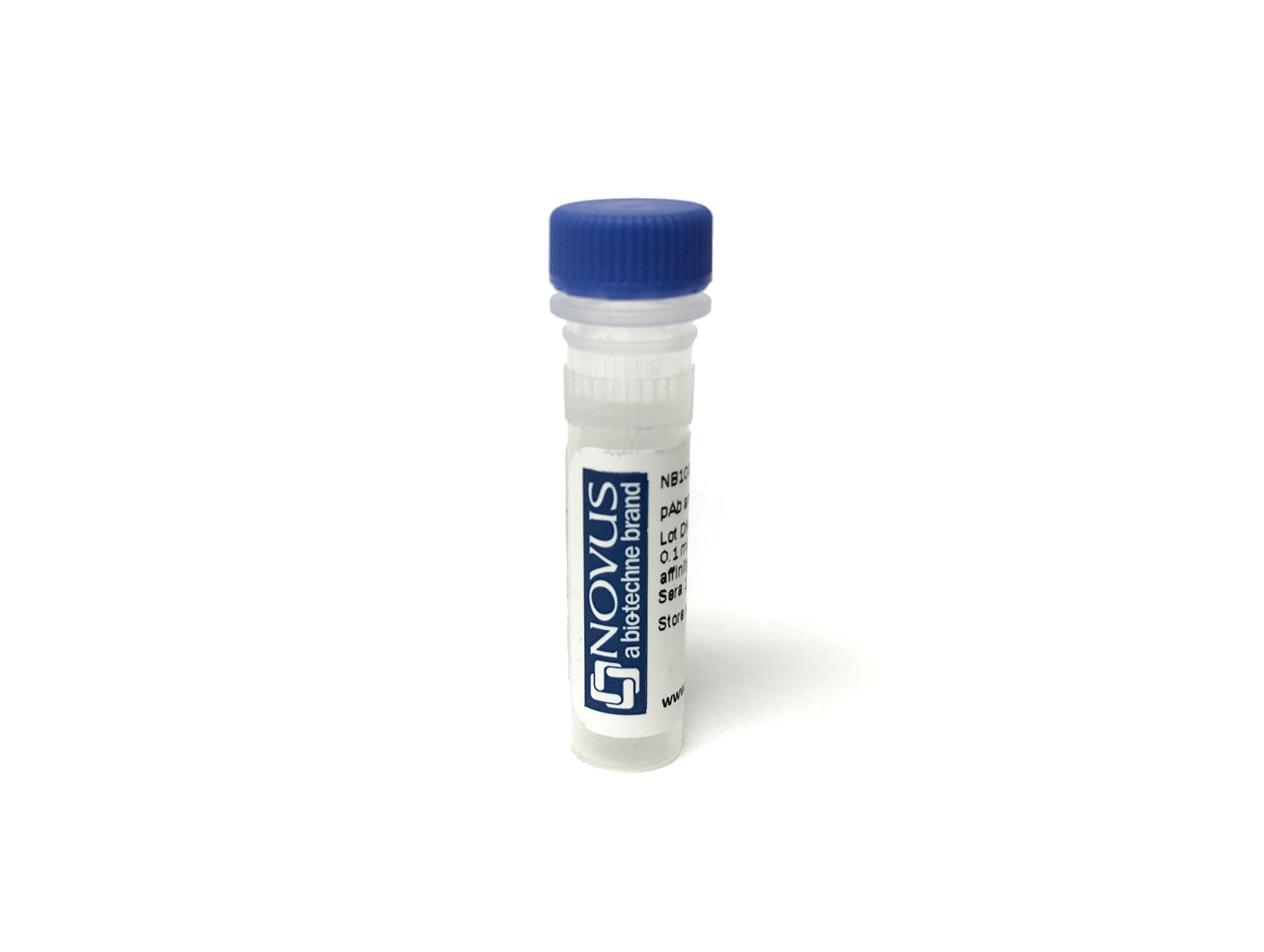ABCG1 Antibody [PE]
Novus Biologicals, part of Bio-Techne | Catalog # NB400-132PE


Conjugate
Catalog #
Forumulation
Catalog #
Key Product Details
Species Reactivity
Human, Mouse, Rat, Chinese Hamster, Hamster, Monkey, Rabbit
Applications
Immunohistochemistry, Immunohistochemistry-Paraffin, Western Blot, Immunoblotting, Flow Cytometry, Flow (Intracellular), Immunocytochemistry/ Immunofluorescence, Immunoprecipitation, In vitro assay, In vivo assay
Label
PE (Excitation = 488 nm, Emission = 575 nm)
Antibody Source
Polyclonal Rabbit IgG
Concentration
Please see the vial label for concentration. If unlisted please contact technical services.
Product Specifications
Immunogen
A synthetic peptide made to an internal region of human ABCG1 (between residues 300-400). [UniProt# P45844]
Reactivity Notes
Rabbit reactivity reported in scientific literature (PMID: 23185679). Chinese Hamster and Monkey reactivity reported in scientific literature (PMID: 27230131).
Clonality
Polyclonal
Host
Rabbit
Isotype
IgG
Applications for ABCG1 Antibody [PE]
Application
Recommended Usage
Flow (Intracellular)
Optimal dilutions of this antibody should be experimentally determined.
Flow Cytometry
Optimal dilutions of this antibody should be experimentally determined.
Immunoblotting
Optimal dilutions of this antibody should be experimentally determined.
Immunocytochemistry/ Immunofluorescence
Optimal dilutions of this antibody should be experimentally determined.
Immunohistochemistry
Optimal dilutions of this antibody should be experimentally determined.
Immunohistochemistry-Paraffin
Optimal dilutions of this antibody should be experimentally determined.
Immunoprecipitation
Optimal dilutions of this antibody should be experimentally determined.
In vitro assay
Optimal dilutions of this antibody should be experimentally determined.
In vivo assay
Optimal dilutions of this antibody should be experimentally determined.
Western Blot
Optimal dilutions of this antibody should be experimentally determined.
Application Notes
Optimal dilution of this antibody should be experimentally determined.
Formulation, Preparation, and Storage
Purification
Immunogen affinity purified
Formulation
PBS
Preservative
0.05% Sodium Azide
Concentration
Please see the vial label for concentration. If unlisted please contact technical services.
Shipping
The product is shipped with polar packs. Upon receipt, store it immediately at the temperature recommended below.
Stability & Storage
Store at 4C in the dark.
Background: ABCG1
A variety of cardiovascular and cardiometabolic diseases are associated with ABCG1 dysfunction (5-7). Macrophages can become cholesterol-containing foam cells that are generated by the uptake of low-density lipoproteins (LDL), cholesterol esterification, and compromised cholesterol efflux machinery in transporters like ABCG1 and ABCA1 (2, 5, 6, 7). Foam cells are associated with the chronic, inflammatory disease atherosclerosis which is characterized by arterial buildup of plaques that can ultimately lead to cardiovascular disease (5, 6, 7). Additionally, ABCG1 has a critical role in cardiometabolic disorders. Studies have found that diabetic mice have decreased ABCG1 expression (8). Furthermore, loss of ABCG1 in mouse pancreatic beta cells ultimately leads to impaired insulin secretion, suggesting that inhibition or modulation of ABCG1 may contribute to development of diabetes and obesity (8). Finally, other related ATP-binding cassette transporter family members, such as ABCA1 and ABCG5/8, have been associated with genetically-inherited syndromes like Tangier disease, characterized by reduced levels of HDL in the blood, and Sitosterolemia, characterized by elevated plant sterol lipid accumulation in blood and tissues (7). .
Alternate names for ABCG1 includes ABC transporter 8 (ABC8), ATP-binding cassette transporter, anti-, sub-family G (WHITE), homolog of Drosophila white, and MGC34313. .
References
1. Tarling E. J. (2013). Expanding roles of ABCG1 and sterol transport. Current opinion in lipidology. https://doi.org/10.1097/MOL.0b013e32835da122.
2. Tarr, P. T., Tarling, E. J., Bojanic, D. D., Edwards, P. A., & Baldan, A. (2009). Emerging new paradigms for ABCG transporters. Biochimica et biophysica acta.https://doi.org/10.1016/j.bbalip.2009.01.007.
3. Tarling, E. J., & Edwards, P. A. (2011). ATP binding cassette transporter G1 (ABCG1) is an intracellular sterol transporter. Proceedings of the National Academy of Sciences of the United States of America. https://doi.org/10.1073/pnas.1113021108.
4. Phillips M. C. (2014). Molecular mechanisms of cellular cholesterol efflux. The Journal of biological chemistry, 289(35), 24020-24029. https://doi.org/10.1074/jbc.R114.583658.
5. Ouimet, M., Barrett, T. J., & Fisher, E. A. (2019). HDL and Reverse Cholesterol Transport. Circulation research. https://doi.org/10.1161/CIRCRESAHA.119.312617.
6. Yu, X. H., Fu, Y. C., Zhang, D. W., Yin, K., & Tang, C. K. (2013). Foam cells in atherosclerosis. Clinica chimica acta; international journal of clinical chemistry. https://doi.org/10.1016/j.cca.2013.06.006
Long Name
ATP-binding Cassette, Sub-family G (WHITE), Member 1
Alternate Names
ABC8, WHITE1, WHT1
Gene Symbol
ABCG1
Additional ABCG1 Products
Product Documents for ABCG1 Antibody [PE]
Product Specific Notices for ABCG1 Antibody [PE]
This product is for research use only and is not approved for use in humans or in clinical diagnosis. Primary Antibodies are guaranteed for 1 year from date of receipt.
